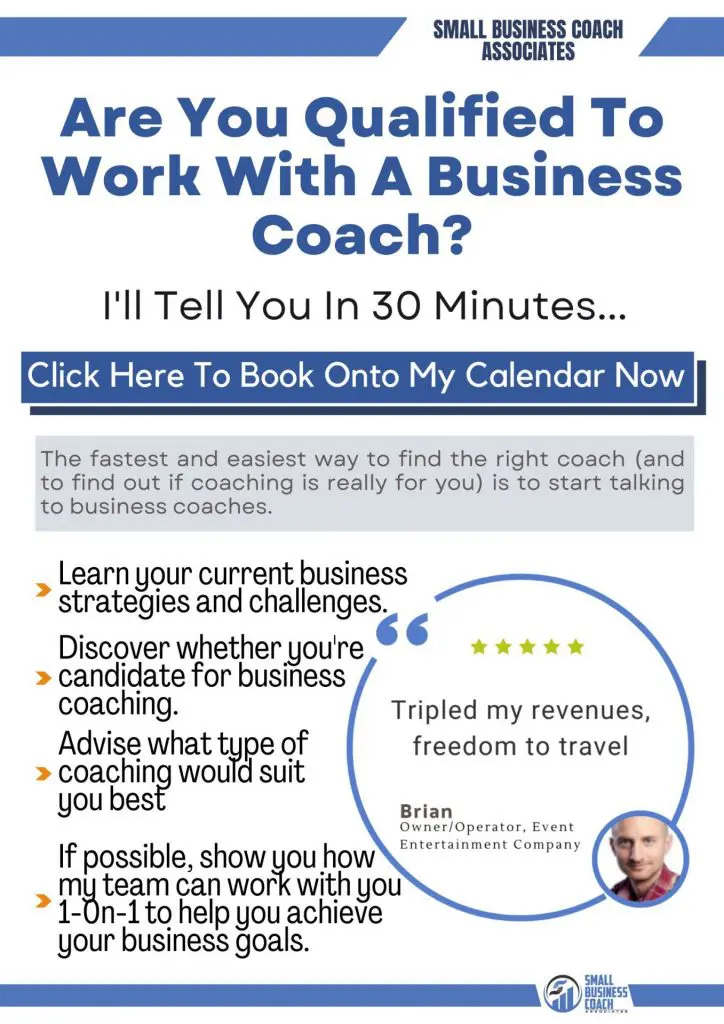VIEW BY TOPIC
- Finding Customers
- Business Systems
- Managing Employees
- Leadership
- Managing Money
Related Posts

Ready to Grow Your Business Fast?
Here’s How I Grew Five Businesses, and Eventually Sold One to a Fortune 500 Company.

8 Marketing Tips for Small Businesses
Marketing is crucial for any small business to grow and compete. However, businesses must adopt certain marketing strategies and tips to reach the right target audience and maximize limited resources. The following are nine marketing tips for small businesses to increase brand awareness and sales without breaking the bank.
-
Define Your Target Market
Before you initiate any marketing campaign, you must define your target market. This requires a detailed understanding of customer demographics, behavior, and buying patterns. Identify relevant criteria such as age, gender, geographical location, income level, and interests to personalize your message and increase engagement. Knowing who you want to reach out to and what interests them will allow you to create content and ads tailored specifically for this segment. For example, if your target market is young millennials living in a specific city, you could create promotional campaigns that appeal to their lifestyle.
-
Offer Discounts and Promotions

Discounts and promotions can attract new customers and encourage existing customers to make repeat purchases. You can use coupons or promotional codes online and discounts for bulk purchases. Include freebies, such as samples, e-books, and digital downloads, with each purchase. Additionally, limited-time offers are another effective way to generate interest and increase sales by creating a sense of urgency in potential customers.
Consider setting up loyalty programs rewarding existing customers for their repeat business. Offer rewards points that can be redeemed for discounts or free products to show your appreciation and encourage them to keep buying from you. However, it is essential to balance offering attractive deals and maintaining profitability. You should develop a sound pricing strategy considering your business’s costs, margins, and overall sales objectives.
-
Develop Your Brand Identity
Your brand identity should be consistent across all platforms to create a cohesive customer experience. Create a logo reflecting who you are, build an aesthetically pleasing website, and incorporate other visual elements like colors, shapes, patterns, and fonts into your messaging. The goal is to develop a recognizable brand image to engage potential customers and bolster sales.
Use fun elements such as humor or interesting designs to stand out in the crowd and make a lasting impression. You can also use vinyl window decals to advertise your brand in physical locations. When designing your window graphics, work with a professional to custom make unique and memorable window sticker decals. They will also ensure consistency with your branding and marketing message.
-
Leverage Social Media
Developing a comprehensive social media strategy tailored to your business goals will help you build customer relationships and amplify brand recognition. Create content that adds value to your followers’ lives. Use visuals like images and videos to drive engagement better than plain text posts. Consider running targeted ad campaigns on social media to reach a more precise audience. It will help you maximize return on investment and increase sales.
Engage with your followers regularly and respond to queries promptly, which will help build trust and strengthen customer relationships. Make sure to measure the success of your social media campaigns by analyzing metrics such as post reach, engagement rate, and website click-throughs.
-
Create an Email Marketing Campaign
You can keep your customers engaged and informed about your brand by creating an email list and sending regular newsletters, product updates, and sales promotions. Start by creating an email list of potential customers, then segment it according to customer interests and preferences. Design emails that are catchy and have incentives like discounts and freebies. Use A/B testing to determine which subject lines or creative elements work best in generating clicks and conversions.
Include links or call-to-action buttons in your emails to drive customers back to your website, as this will help you track their journey from the initial contact through to conversion. Include shareable content to encourage customers to spread the word about your business. Automation tools like MailChimp can make it easier for you to manage large subscriber lists and track campaign performance over time.
-
Collaborate with Strategic Partners
Collaborating with strategic partners such as other businesses, industry experts, and organizations can help you reach a larger audience and increase sales. Consider adding links from these partners’ websites to yours, or vice versa, as this will increase your site’s traffic. You could also organize joint giveaways that would benefit both parties involved.
Inviting influential people within the industry for interviews or podcast appearances can help you tap into their existing audiences and drive more engagement. Discussing topics related to your brand on social media platforms such as Twitter or Instagram would be another interesting option. Establish sustainable relationship-building practices to ensure the long-term success of the collaboration.
-
Participate in Networking Events

Attending trade shows, conferences, workshops, and other events relevant to your industry or expertise provide a platform to display your products or services to a wider audience. Attending these events can provide valuable information about industry trends and offer opportunities to connect with important individuals in the market.
When attending such events, have handy flyers or brochures explaining what makes your business unique. Have conversations with attendees and let them know about any current deals or promotions that might be running on your website. Remember to follow up after the event by staying in touch via email or social media platforms. It will help you build and maintain your network of contacts while also boosting sales in the long run.
-
Use Customer Reviews and Testimonials
Word-of-mouth marketing involves leveraging satisfied customers to spread positive feedback about your business. Ensure these reviews are honest and reflect the true experience of the customer. Showcase these positive reviews on social media platforms to amplify brand recognition and reach a larger audience.
Consider providing incentives like discounts or freebies in exchange for genuine reviews, encouraging more people to get involved. Respond promptly whenever a customer leaves negative feedback or reviews, as this will show that you take customer complaints seriously. It will show that you are committed to providing high-quality service and improving upon areas where necessary.
Endnote on Marketing Tips
Marketing your small business, it’s essential for your success. By employing these eight marketing tips, you can create a comprehensive and effective marketing strategy that reaches and engages your audience, builds your brand reputation, and drives sales and revenue. Remember to be consistent, test your strategies regularly, and track your results to improve and iterate on your marketing efforts over time. Your small business can thrive and succeed in the competitive marketplace with dedication and persistence.













